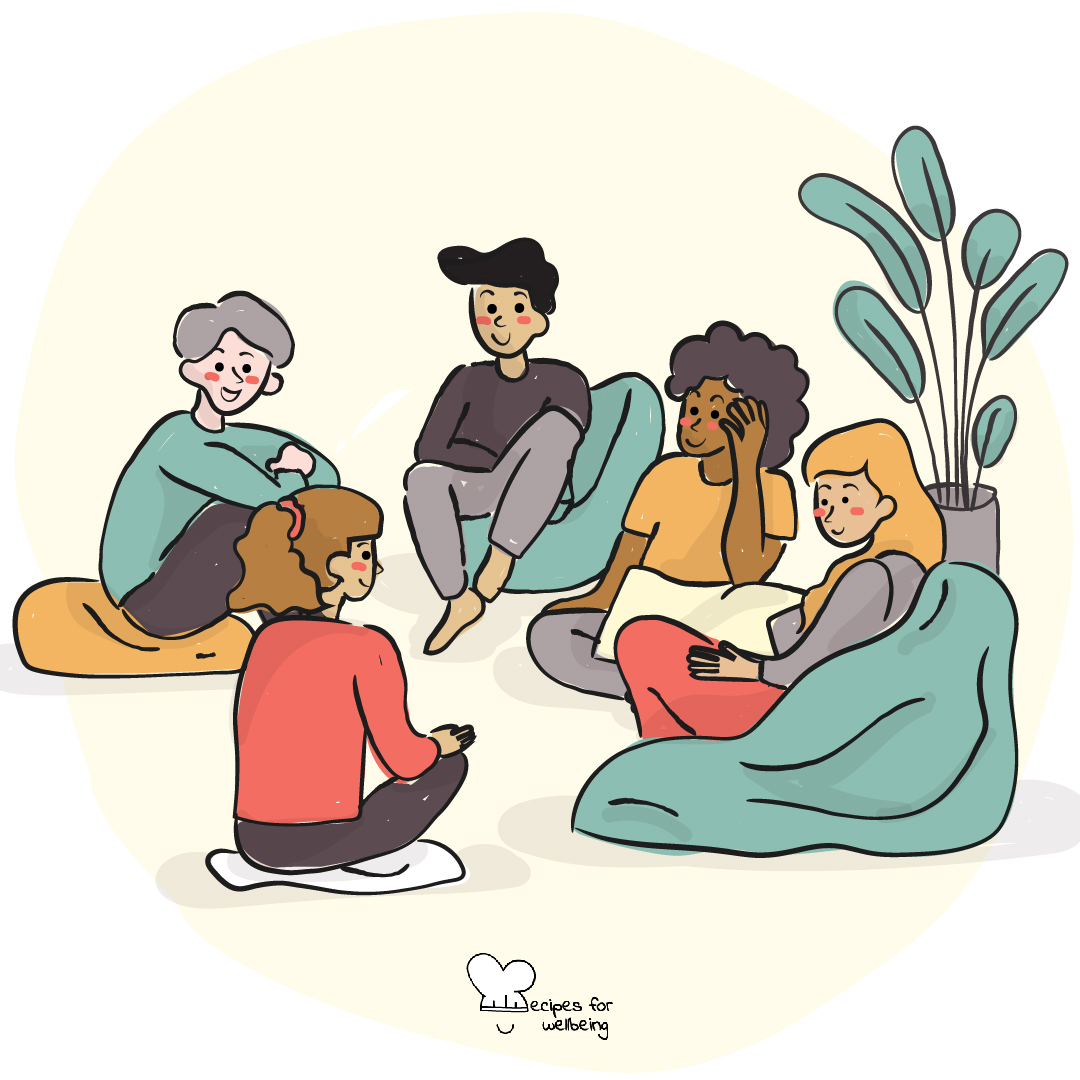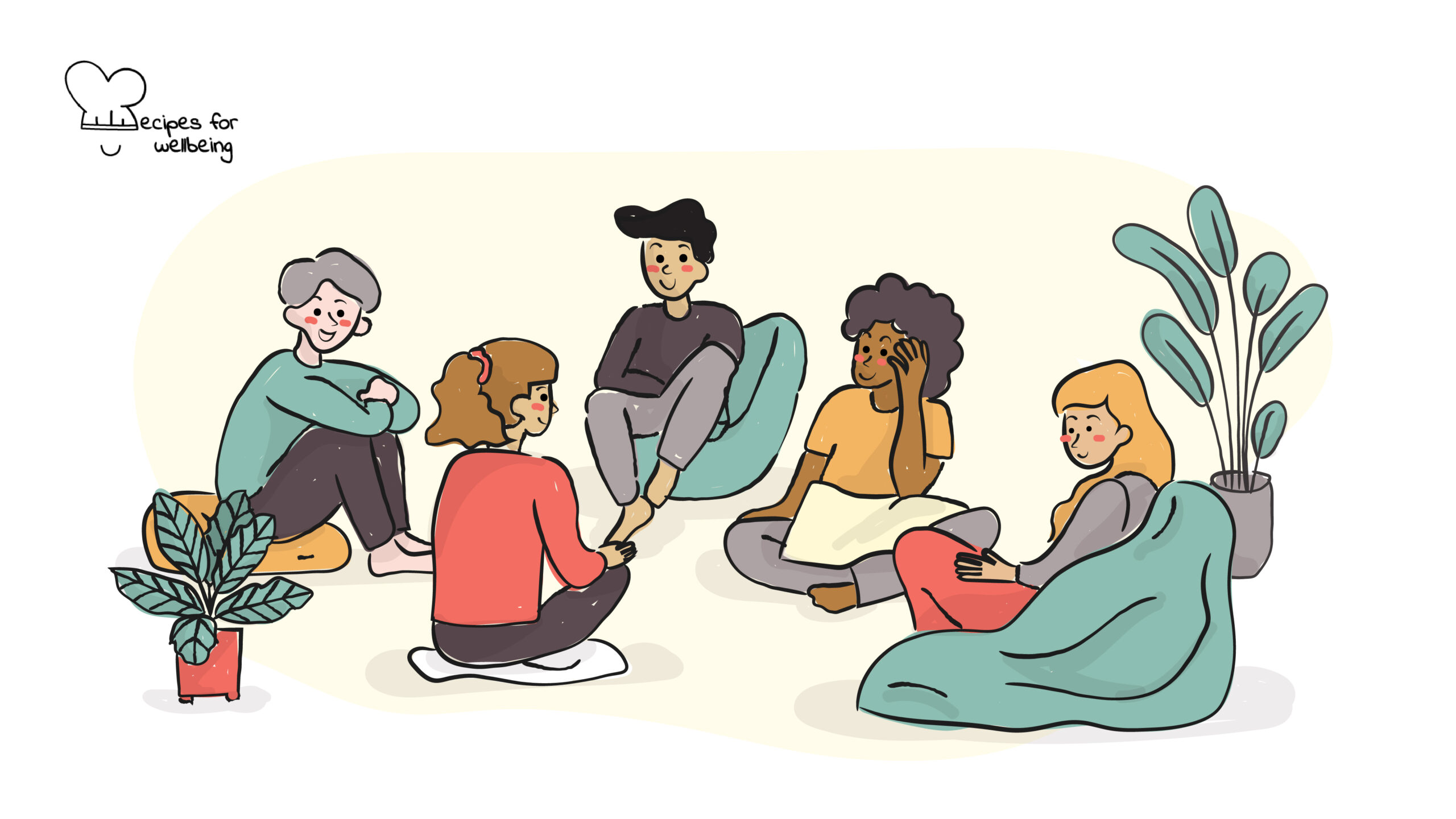
Action learning set
There are no problems we cannot solve together and very few that we can solve by ourselves. ―Lyndon B. Johnson
👥 Serves: 2-10 people
🎚 Difficulty: Medium
⏳ Total time: 61-120 minutes
🥣 Ingredients: 1 group of peers (or multiple groups of 6-8 people each), ground rules available to all participants (see below)
🤓 Wholebeing Domains: Community, Liberatory Learning, Radical Care
💪 Wholebeing Skills: Accountability, Altruism, Coaching, Collaboration, Giving, Hosting conversations, Inquiry, Listening, Self-directed learning

Action learning set
📝 Description
A group-coaching activity to help someone get unstuck and move forward.
An Action Learning Set is a group of peers who regularly come together to work through real wellbeing challenges, using questioning to help the presenter to re-interpret challenging situations and produce new solutions.
ALSs are a powerful way to share lessons and a safe environment to progress new ideas. They promote individual accountability and enhance the group’s problem-solving capacity as well as offering opportunities for self-discovery and improvements in communication skills.
Principles
- Resourcefulness―The fundamental principle of Action Learning Sets is the belief that the presenter can solve their own issues with their own resources.
- Generosity―An ALS should be presenter-led and participant-enabled. You should give the presenter the gift of 100% focus.
- Openness―Participants should use non-directive and non-leading questions to help the presenter understand their own situation better and find their own solutions.
- Non-judgement―Don’t exercise your (positive or negative) judgement of the presenter’s actions or beliefs – including after the ALS.
- Respect―No talking over/interrupting people. Turn your phone off before you start.
- Confidentiality―Adopt ‘Chatham House Rules’, what happens in ALS stays in ALS. No notetaking.
Example of Non Directive Questions
- “How are you currently approaching the issue?”
- “What other options are there?”
- “How do you feel about the situation?”
Example of Directive Questions
- “Do you really think that’s a good idea?”
- “Why don’t you try this?”
- “You must be frustrated. Are you frustrated?”
•••
This recipe has been featured in our blog post “Group coaching to get your team ‘unstuck’” published on tbd* on 26 August 2020.
👣 Steps
Step 1 – Check-in (10’)
First, agree who will be the facilitator and the timekeeper. The facilitator will then introduce the session and guide participants through a check-in: “What’s up? What’s happened since last time?”
Step 2 – Ground rules (5’)
The facilitator reads out the ground rules and asks for any clarifications or additions to the rules.
Step 3 – Bid (5’)
Each participant presents a ‘one-liner’ on what they would present and gives a mark out of five for how burning the issue is.
Step 4 – Nominate the presenter (5’)
The group decides, by consensus, which issue they should look at (usually the most urgent and/or ‘meaty’ issue).
Step 5 – Introduce the issue (10’)
The presenter introduces the issue, completely uninterrupted.
Step 6 – Clarify the issue (5’)
Participants ask clarification questions only.
Step 7 – Seek understanding (45’)
Participants ask open questions about the issue.
Step 8 – Explore actions (10’)
Participants move the presenter towards commitments to action.
Step 9 – Reflection (15’)
Participants reflect on the process, the presenter, then the issue.

